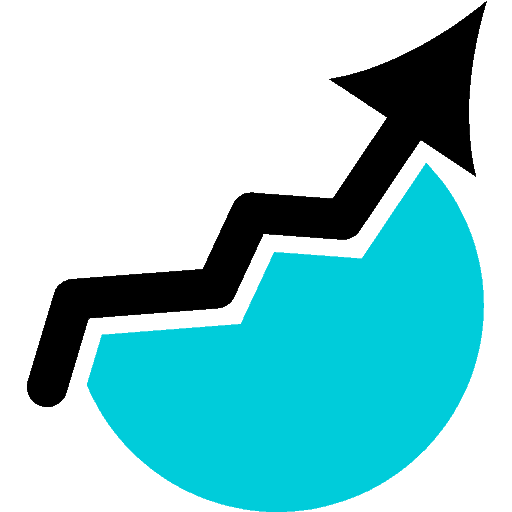Complete Beginner Guide To Investing
Are you all set to start saving for your retirement but have no idea where to begin?
If so, then you are in the right place. We’re going to break down everything you need to know to start investing as a complete beginner.
No matter when you’re reading this, the very best time to begin investing was yesterday. The second best time is right now. We can not rely on social security to take care of us, and even if it is around when we retire, it more than likely won’t be almost enough to live off of.
What Happens When You Don’t Invest Your Money For Retirement?

Many people don’t think of saving money for retirement since they think it’s risky, presume their kids will care for them, or think social security will be enough for them to live off of.
Storing money in a bank savings account simply isn’t sufficient. When you consider inflation over the next few years, your money will certainly decline in value, and you’ll effectively be losing cash because of it.
But if you invest smartly, you’ll be protected. Even if the securities market crashes, you’ll still have an excellent return over the course of your investing journey. You can handle the fluctuating highs and lows of the market if you’re a smart investor.
How Much Do You Need To Have Saved For Retirement:

Let’s start your investing journey by figuring out how much you will need to be able to retire comfortably.
The general rule of thumb is that you should save about 10 years worth of your standard living expenses, on the assumption you will retire around 67 years of age and live to at least 77 years of age.
There are several retirement calculators online; however, my favorite is the Nerd Wallet’s retired life calculator. It’s easy and straight forward to use. Give it a try here.
All you do is enter your age, your pre-tax earnings, and your existing financial savings. You ought to include how much money you save each month.
After that, it’s optional to add just how much your regular monthly retired life costs will likely be, how long from now you plan to retire, and what your life expectancy is (it feels a little awkward filling that one out).
How Much Should I Save Each Month?

Once you enter your numbers in the retirement calculator, you can identify how much you should save each given month.
Most individuals advise saving 10% of your take-home salary. Here are some example of how this might look:
Example 1:
Yearly Income after tax obligation: $65,000.
You spend 90% of your income and put the remaining 10% (6,500) from ages 30-65 in an index fund in a Roth IRA.
Amount You Contributed by 65 = $227,500
Estimated Tax Free Roth IRA Balance by 65 = $668,609
Example 2:
Save $50 weekly or $200 per month in an inexpensive index fund from 30-65.
Amount You Contributed by 65 = 84,000
Average total amount Saved after 35 years: $160,348
How Can I Begin Saving For Retirement?

The simplest method to begin saving for retired life is to contribute to an employer-sponsored 401k. Many companies use a company match (which we’ll talk about later, yet it’s essentially “free money”).
If you’re a business owner and run a local business, you have different alternatives, including an Individual 401k, SEP IRA, and Simple IRA.
What Are The Different Retirement Plans?
There are several; however, we’ll only be going over the most common ones here. Check out the IRS website here if you want a list of different retirement plans.
A few of the primary retirement plans to select from are a standard 401k, IRA, Roth IRA, Roth 401k, Simple IRA, as well as SEP IRA. Each retirement has different guidelines on how much you can add, the annual income limit, and when you can take withdrawals scot-free.
The most typical retirement Plans are:
Traditional 401k
Roth 401k
Traditional IRA
Roth IRA.
Traditional 401k.
Contributions: Made with pre-tax bucks.
Revenue limitations: No earnings restriction to get involved.
Optimum payment in 2020: $19,500.
Roth 401k.
Payments: Made with after-tax dollars from income.
Earnings restrictions: No income limitation to get involved.
Optimum contribution in 2020: $ 19,500.
Traditional IRA.
Contributions: Made on pre-tax bucks.
Revenue limitations: No earnings limit.
Maximum contribution in 2020: $6,000.
Roth IRA.
Payments: Made with after-tax bucks.
Income limitations: Under $139,000 songs, $206,000 wed pairs in 2020.
Optimum contribution in 2020: $6,000.
Quick Investing For Retirement Tips:
Focus on the long-lasting when spending your cash.
Time in the market is more crucial than timing the market.
Keep it boring and basic and also stick to index funds instead of private supplies.
Establish automated transfers right into your financial investment accounts, so you don’t also have to consider it.
Reduced your monthly expenses by developing a budget plan or by being a lot more conscious of your investing. Spend your money in such a way that makes you happy while conserving instead of attempting to keep up with the Joneses.
Numerous employers offer to match your 401k payments.
Not taking your employer’s match is essentially leaving free money on the table. Be sure to ask “Does the job offer a 401k match?”.
How To Contribute More To Your Retirement Investment Accounts:

I often listen to many people state they have not begun saving for retired life since they live paycheck to paycheck
and have nothing left over to save or invest with.
If this sounds like you, here are a few quick tips:
- Cut expenses and also learn exactly how to save money every month.
- Discover exactly how to make more cash either with a side hustle or a new work that pays more.
- Establish automatic payments into your pension or have them taken directly out of your paycheck (so you never also miss out on the money).
How To Find a Middle-Ground Between Living Life & Saving For Retirement?
When it comes down to it, individual money is individual. What are some things that you truly delight in and also want to invest money in? Maybe it’s going to a nice restaurant once a month, buying expensive clothes, or getting a premium gym membership.
You can balance both saving money and spending money on things you enjoy; that’s all part of having a healthy relationship with money.
My Investing Journey:

As I run my own business, I decided to open an Individual 401k. I also opened a Roth IRA and Traditional IRA. I chose index funds for my accounts.
I also use Robinhood and invest VERY small amounts in individual stocks for fun on the side. (You get a free stock here when you first sign up for Robinhood.)
The Best Investing Books To Read:
Here are the 3 most helpful books that are for beginner investors. These books aren’t hard to read or stuffy, and I actually found them to be pretty fun reads for the most part.
All of these books can be found on Amazon. You should purchase at least one investing book to keep on hand as a hard copy that you can easily reference back to.
Broke Millennial Takes On Investing.
The Bogleheads’ Guide to Investing.
Work Optional: Retire Early The Non-Penny Pinching Way.
For more recommendations on investing books go here.
What You Should Do Now:
Now that you have some base-level knowledge on how to invest, it’s time to get started.
I recommend starting by creating a budget so that you can figure out how much you can save each month for retirement. After you know what you can save, get going by setting up auto contributions from your paycheck straight to your savings account.
Set up automatic transfers that go into your 401k and do your best to meet your employer’s company match to your 401k if they have offer such a program. A Roth IRA may be a perfect choice for you as well, which you can open at places like Wealthfront, Betterment, or Vanguard.
The Number One Tip For Someone New To Investing:
The top tip I would give to someone new to investing is to set up an automatic savings system at your bank.
This is where you have money automatically taken from your bank account and invested on your chosen schedule.
You can set it up so that $500 is taken from your checking account and invested in an index fund with your brokerage on the first of every month.
Final Thoughts:

If you just read this and you feel more confused than when we started – that’s okay! Everything has a learning curve, and it can take some time for information to sink in.
This is why I recommend reading some investing books in your spare time to get a better feel for the whole thing.
Investing is a part of becoming recession proof.
- How to Save Money on Marketing (Without Scaling Back) - October 15, 2022
- Become Your Own Marketing Department With These Essential Tips - October 5, 2022
- The 100 Best Money Quotes of All Time - August 16, 2022








